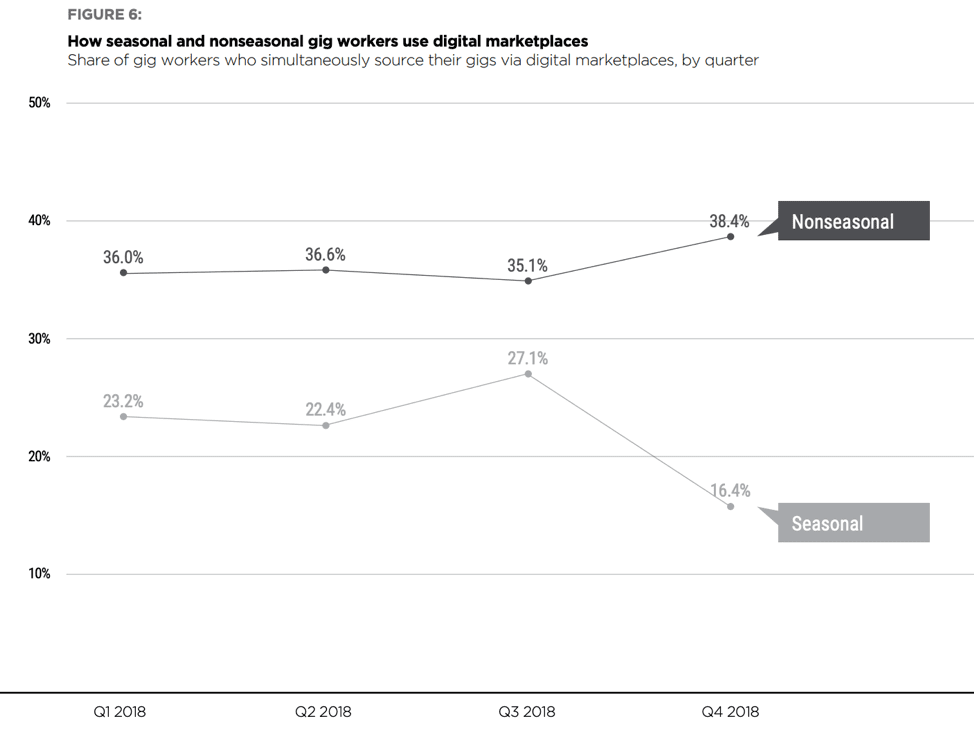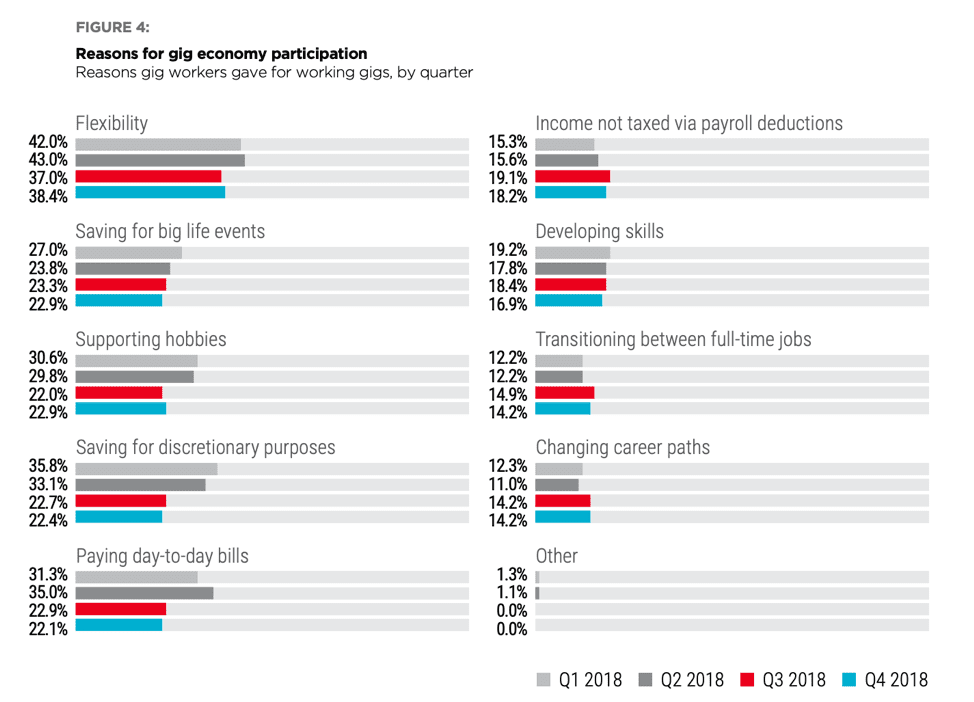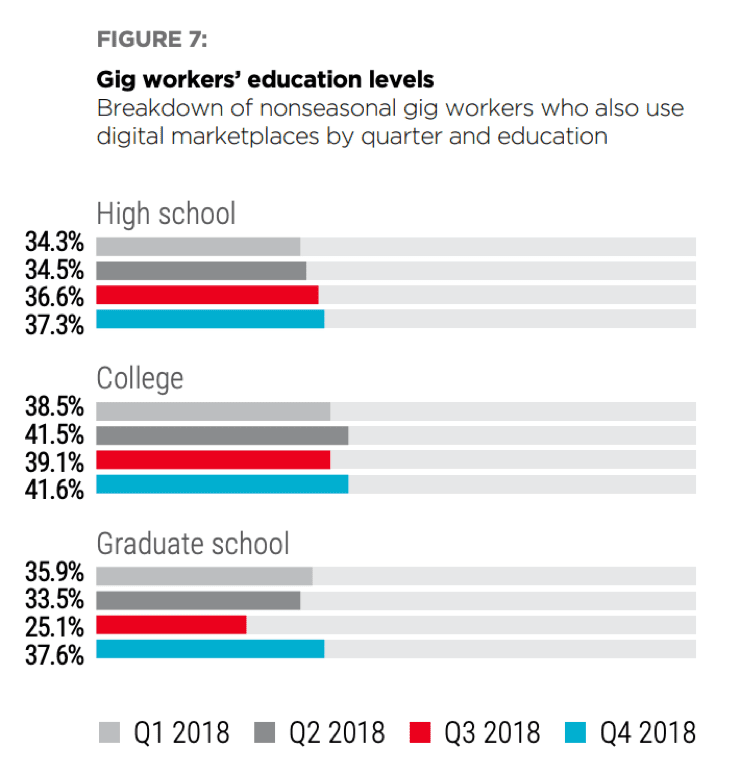The gig economy has operated — and thrived — in a gray area. There has been a question as to whether workers are actually employees or contractors. The classification is far less nebulous as the Labor Department weighed in on the side of companies like Uber and Taskrabbit last month and suggested that gig workers were contractors.
This means these workers won’t qualify for the federal minimum wage or overtime, and will be responsible for their share of Social Security taxes.
Classifying gig workers as employees would raise the cost of doing business for many gig economy businesses.
In the April 2019 Gig Economy Index, PYMNTS analyzed the current state of the gig economy. There is no question that it’s big business. Last year, gig workers’ earnings were estimated to exceed $1.7 trillion.
Part of the logic behind the Labor Department decision was that gig economy companies are only acting as middlemen with digital platforms.
But those digital platforms are integral to the gig economy and are beginning to influence how and when workers get paid.
Advertisement: Scroll to Continue
In the study, workers who sourced their gigs via such platforms were more likely than others to receive compensation via PayPal and direct deposit, and less likely to be paid via cash or check.
The survey, which was conducted in Q3 and Q4 2018, found that digital marketplaces like TaskRabbit, Uber and Airbnb play a critical role for gig workers, primarily — but not across the board — for skilled, nonseasonal workers.
In Q4 2018, there was a jump in nonseasonal workers sourcing gigs via digital marketplaces (38.4 percent) while seasonal workers had lower usage throughout 2018, which dipped in Q4 2018.

It might seem counterintuitive that seasonal gig workers would use digital marketplaces less during the holiday season, but this likely reflects the different types of jobs available through digital marketplaces.
It also has to do with the workers themselves. Saving for discretionary purposes, a common goal of seasonal work, was cited less as a reason for gig economy participation in Q4 2018 than in previous quarters. More workers prioritized flexibility (38.4 percent).

Nonseasonal gig workers have different motivations and they are likely to be seeking different work than seasonal workers because they also have higher levels of education. In Q4 2018, 37.6 percent of nonseasonal gig workers had graduate degrees and 41.6 percent had college degrees.

The share of nonseasonal gig workers who use digital marketplaces and are not employed outside the gig economy also rose, from 33.4 percent in Q3 2018 to 39.3 percent in Q4. These highly educated nonseasonal workers aren’t using gig work to supplement a steady income but are fully embracing the gig economy.
The increased usage of digital marketplaces is changing the way gig workers get paid. The most popular method in Q4 2018 was PayPal (41.9 percent), an increase from 32.4 percent in Q1. Checks (36.7 percent) and direct deposit (38.2 percent) were less common.
PayPal is commonly provided by digital job platforms, meaning usage is likely to grow as highly skilled workers flock to marketplaces.
More gig workers who sourced jobs through digital marketplaces were paid instantly (26.8 percent) than those who used other means to obtain work (22.3 percent).
This is probably because a majority of digital marketplaces (51.3 percent) use PayPal while non-digital marketplaces were less likely to use PayPal (30.5 percent).
Interestingly, direct deposit had higher levels of satisfaction than PayPal; 70.1 percent said they were “very” or “extremely” satisfied compared to 66.6 percent. Direct deposit also gives workers immediate access to their earnings, but this is a less common way to pay contract workers.
This is only a 3.5 percentage point difference and the study didn’t delve into these preferences. In an earlier study, it was found that some workers might prefer PayPal to other payment services due to name recognition and some preferred direct deposit to avoid fees associated with accepting payment.
Payment methods also differed by age. A majority (52.9 percent) of gig workers between the ages of 18 and 24 were compensated via PayPal in Q4 2018. Those 25 to 34 were nearly equally paid through PayPal (45.9 percent) and direct deposit (43.5 percent).
Payment methods were particular to certain industries, as well. Arts and entertainment gigs were the most likely to pay via PayPal in Q4 2018 (52.9 percent) and business and finance gigs tended to use direct deposit more (44.2 percent).
Participants in the gig economy are changing. They are now more likely to be highly educated and seeking flexibility and nonseasonal work than in the past. They also rely on digital marketplaces to find jobs and have different expectations when it comes to payment. Whether or not employers view gig workers as staff, they still must meet user expectations and demands to stay competitive.







